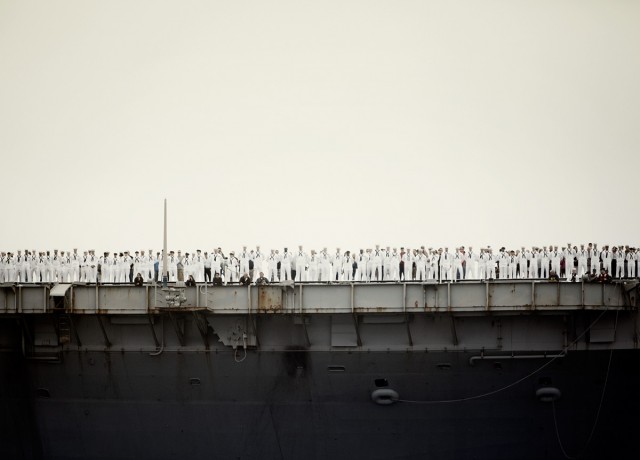Last Friday morning the Navy brought home the super carrier the USS Ronald Reagan. The carriers are usually deployed for many months and sometimes over a year. This particular deployment was a seven month mission that included being the first on the scene of tsunami disaster in Japan. While doing their jobs, the brave men and women that make up the crew leave behind their families. The Navy estimated estimated 10,000 of those family members would be on hand to welcome home their heros.
The view from the pier to the waterway to the ocean is obstructed by several naval buildings so you can’t see the carrier as it approaches. There are some telltale signs as the 100,000 ton, 5,000 man crew, nuclear powered vessel draws nearer. Smaller and heavily armed boats begin to appear on the water as well as helicopter escorts above. The crowd is on their tip-toes trying to get the first glimpse of the ship that carries their husbands, wives, fathers, mothers, sons, daughters, brothers, sisters and grandchildren. Then a lone shriek, “I see them!” A few seconds of silence go by. Nothing. Then like a David Copperfield magic act, the massive carrier emerges from behind the buildings as if it’s another building floating by. Sailors in their dress whites line very inch of the carrier’s flight deck perimeter. The crowd loses it—screams, shrieks, hooting, hollering, tears.
Even though the ship is now only 100 yards away, it will still be nearly two hours before everyone is reunited. The carrier itself takes upward of an hour just to dock, get tied down and have gangways rolled in. First off the boat are fathers who have never met their son or daughter before. Many newborns arrive a couple months before a deployment returns home. From the dock, some can see their loved ones on board and are already talking via cell phone. It’s good to be home.


